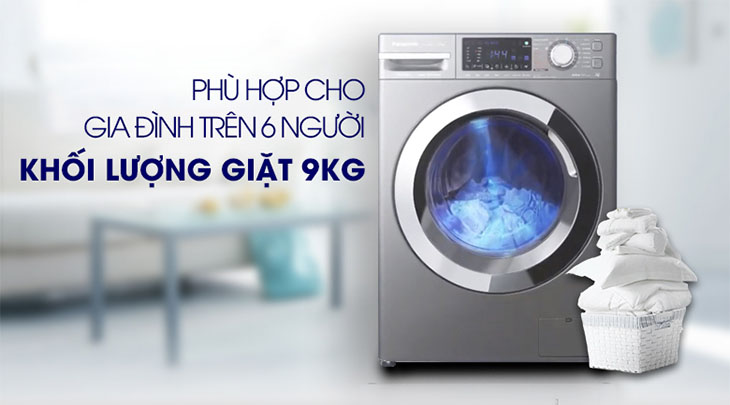What is the washing capacity of a washing machine?
The washing capacity of a washing machine refers to the maximum amount of dry laundry that the machine can effectively wash in one load. For example, an 8.5 kg washing machine can handle up to 8.5 kg of clothes per wash, without water.
However, it is recommended to only fill the machine with 70-80% of its maximum capacity to improve washing efficiency and prolong the lifespan of the machine. For instance, for a 7 kg washing machine, it is advisable to only wash 5-6 kg of clothes per load.

Is the washing capacity indicated on the machine for dry or wet clothes?
The washing capacity mentioned by the manufacturer on the washing machine is calculated based on the volume of dry clothes for one wash. After placing the dry clothes in the drum, the machine adds water to a certain level before starting the washing process.
Therefore, if wet clothes are used instead of dry ones, the amount of water added to the drum will be less than usual.

If you have a small family or a smaller amount of laundry, purchasing a washing machine with a larger capacity may result in unnecessary water and electricity wastage. On the other hand, if you have a larger family with higher washing needs but choose a washing machine with a smaller capacity, it may not be sufficient for your requirements. Hence, it is advisable to consider the appropriate washing machine capacity based on the number of family members:
| Family | Characteristics | Suitable Washing Volume |
|---|---|---|
| 2 – 3 people | Singles or young newlyweds | |
| 3 – 5 people | Families with few members or children with high washing needs | |
| 5 – 7 people | Families with many members | |
| Over 7 people | Families with multiple generations living together |
How to estimate the weight of dry clothes
When estimating the weight of dry clothes, you can refer to a fabric weight estimation table for more accurate results.
| FABRIC WEIGHT ESTIMATE TABLE | ||||
|---|---|---|---|---|
| Category | Weight | Category | Weight | |
| All kinds of pants, skirts | Other clothes | |||
| Towels/Loincloths | 200g | Towel | 600g | |
| Skirt | 200g | Wiper | 250g | |
| Trousers | 250g | Pyjamas | 400g | |
| Jeans | 400g | Underwear | 60g | |
| Cotton bras | 100g | |||
| Underwear | 100g | |||
| Cotton pillowcase | 1.1kg | |||
| Other pillowcases | 0.85kg | |||
| Long socks, 2 pairs | 150g | |||
| Short socks, 2 pairs | 150g | Handkerchiefs (6 pcs) | 85g | |
| Napkins (12 pieces) | 1.1kg | |||
| All kinds of dresses, tops | Bed sheet | |||
| Cotton dress | 280g | Cotton fabric (double) | 1kg | |
| Other types of skirts | 200g | Cotton fabric (single) | 500g | |
| Cotton blouse | 140g | Non-cotton fabric (double) | 650g | |
| Other blouses | 100g | Non-cotton fabric (single) | 400g | |
| Sweater | 400g | |||
| Heavy sweater | 300g | |||
| Light sweater | 150g | |||
Using this table, you can determine the amount of clothes that can be washed in a washing machine with a specific capacity. For instance, a 7.5 kg washing machine can wash 1 light sweater, 1 bed sheet, 1 pair of jeans, 1 cotton blouse, 1 bath towel, 4 towels, and 1 large tablecloth.
By following these guidelines, you can better understand the washing capacity of a washing machine and ensure optimal washing efficiency.
Common Mistakes People Make When Doing Laundry
Using a washing machine has revolutionized the way we do laundry, saving both time and effort for homemakers. However, even something as simple as using a washing machine requires skill. Many people end up ruining their clothes due to basic mistakes when doing laundry. To enhance the effectiveness of washing and increase the durability of both the machine and the clothes, let’s explore some common laundry mistakes you might be making.
































